
Why Choose the Magento 2 Flat Catalog Over the EAV Structure?
Are you dealing with slow performance in your Magento store? Magento 2 flat catalog consolidates product data to boost speed, indexing, and scalability. This tutorial explores the benefits of the Magento 2 flat catalog and how it is better compared to the EAV (Entity-Attribute-Value) structure.
Key Takeaways
-
Understand the significance of the Magento 2 flat catalog in optimizing store performance.
-
Discover the benefits of enabling a flat catalog, including faster indexing and optimized search speed.
-
Understand the differences between flat catalog and EAV structure for storage, flexibility, and development efforts.
-
Follow simple steps to set up the Magento 2 flat catalog and verify the results effectively.
What is the Magento 2 Flat Catalog?
Magento 2 flat catalog is a feature designed to optimize the performance of Magento stores with a large number of products. Magento stores product data in multiple database tables by default. This leads to slower database queries with the growth of the size of the catalog.
The flat catalog feature consolidates product data into flat tables for categories and products. This reduces the number of database joins needed to retrieve product information. This significantly improves the speed and efficiency of operations such as:
- Product Listing
- Product Browsing
- Searching
- Indexing.
You must note that enabling the flat catalog in Magento may increase the size of the database and require additional storage space.
Benefits of Magento 2 Flat Catalog
1. Improved Performance
When product data is consolidated into flat tables, the number of databases to retrieve product information is reduced. This leads to faster loading times for product listing pages, search results, and other areas.
2. Faster Indexing
Indexing processes get much faster with a flat catalog. This results in quicker updates to product data and attributes. It ensures that changes are reflected promptly on the storefront.
3. Enhanced Search Speed
Search functionality within the Magento store benefits significantly from the flat catalog feature. When product data are organized into flat tables, searches are executed more efficiently. This results in enhanced Magento speed and more accurate search results for customers.
4. Scalability
Performance becomes a concern for e-commerce stores as product catalog size grows. The flat catalog feature helps improve scalability by optimizing necessary data retrieval and processing. This allows the store to handle larger volumes of products and categories without sacrificing performance.
5. Reduced Database Load
The flat catalog feature reduces the overall load on the database server. It is done by reducing the number of database joins and optimizing data storage. This leads to better resource utilization and improved stability, especially during peak traffic periods.
6. Simplified Development
A flat catalog simplifies development efforts for developers working on customizations or extensions for Magento stores. With product data organized in flat tables, developers may find it easier to access and manipulate data. This leads to more efficient development processes.
7. Better User Experience
Improved performance and scalability provided by the flat catalog feature contribute to a better overall user experience for customers. It enhances customer satisfaction and encourages repeat visits and purchases with:
- Faster page load times
- Quicker search results
- Smoother browsing.
Difference Between Flat Catalog and EAV (Entity-attribute-value) Structure
| Aspect | EAV Structure | Flat Catalog |
|---|---|---|
| Storage Structure | Data is stored across multiple database tables. Each entity and attribute are stored in separate tables. | Related data, especially product data, is consolidated into denormalized flat tables. |
| Flexibility | Highly flexible attribute management. Dynamic addition and removal of product attributes. | Sacrifices some flexibility for performance. Less dynamic attribute management. |
| Performance | Slower database queries, especially with growth. | Optimizes performance by reducing the complexity of database queries. |
| Indexing | Indexing is complex and time-consuming. | Simplified indexing with flat table structure. |
| Development Efforts | Developing and maintaining systems based on the EAV model is more complex due to the EAV structure. | Development effort is simplified with flat tables. |
Steps to Set Up Magento 2 Flat Catalog
1. Enable the flat catalog
-
Navigate to your Magento Admin Panel.
-
Go to Stores > Settings > Configuration.
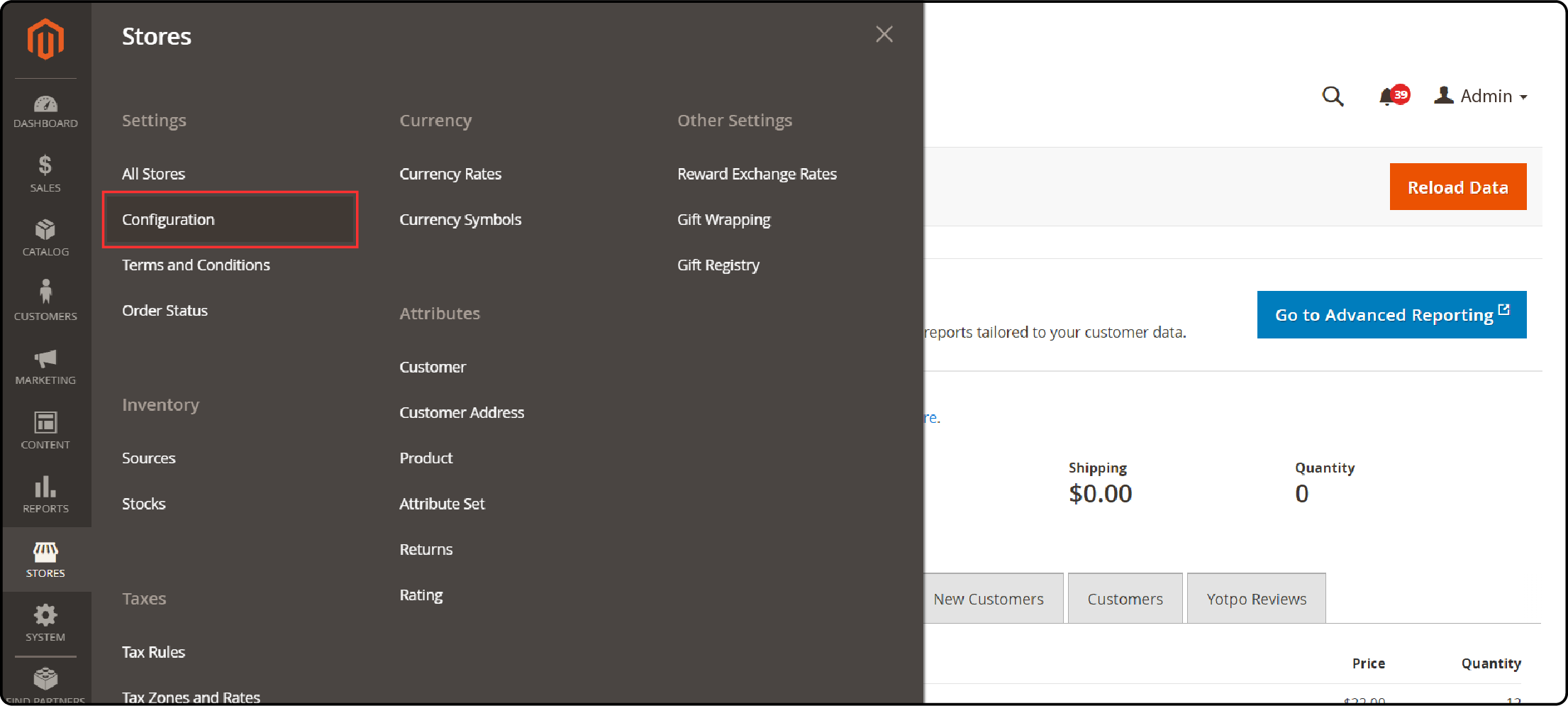
- In the left panel, expand Catalog and select Catalog underneath.
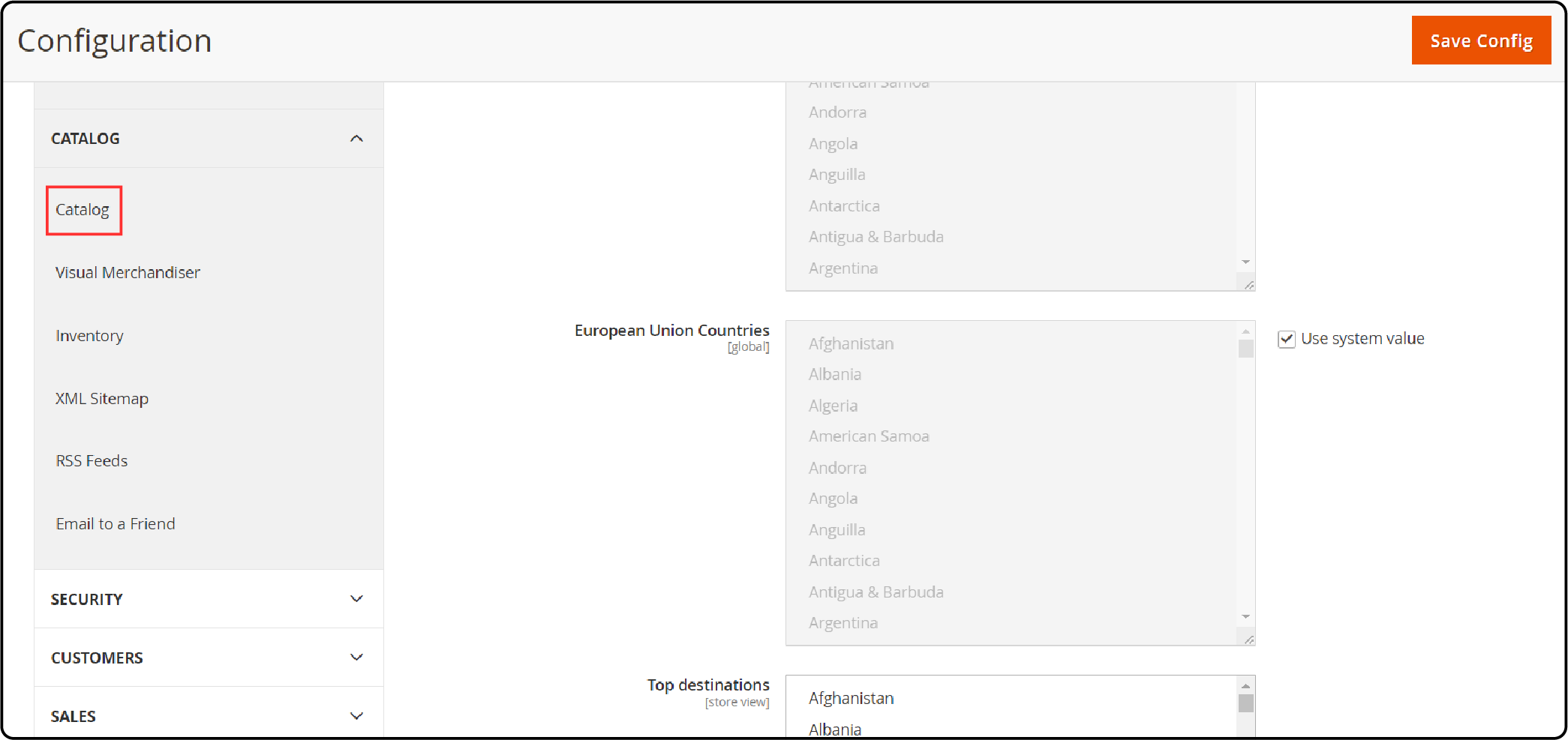
- Expand the Storefront section to:
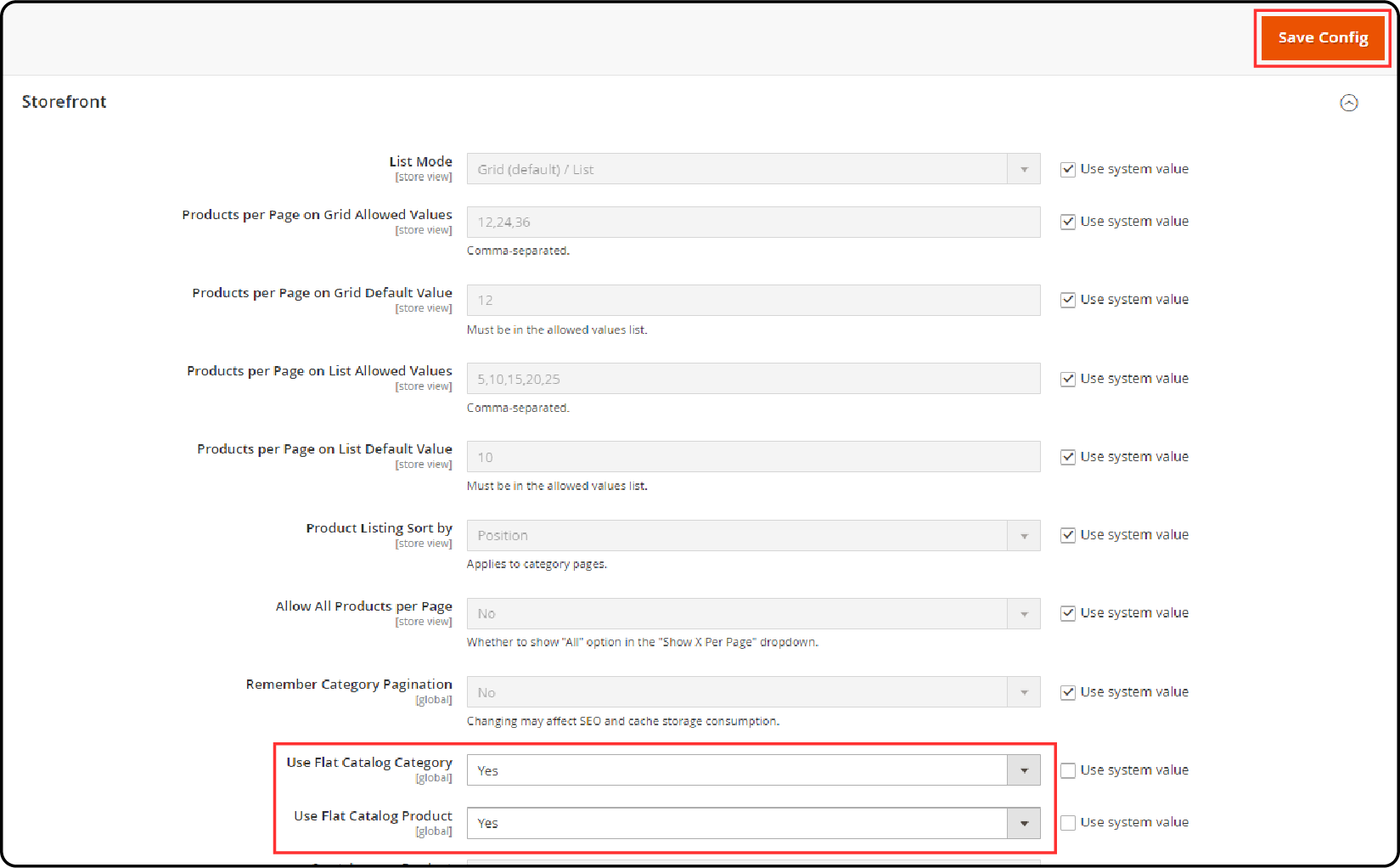
a. Set Use Flat Catalog Category to Yes.
b. Set Use Flat Catalog Product to Yes.
-
Click Save Config to apply the changes.
-
If prompted to update the cache, click on Cache Management in the system message and follow the instructions.

2. Verify the results
Method 1: Verify for a Single Product
- Go to Catalog > Products in the Admin Panel.
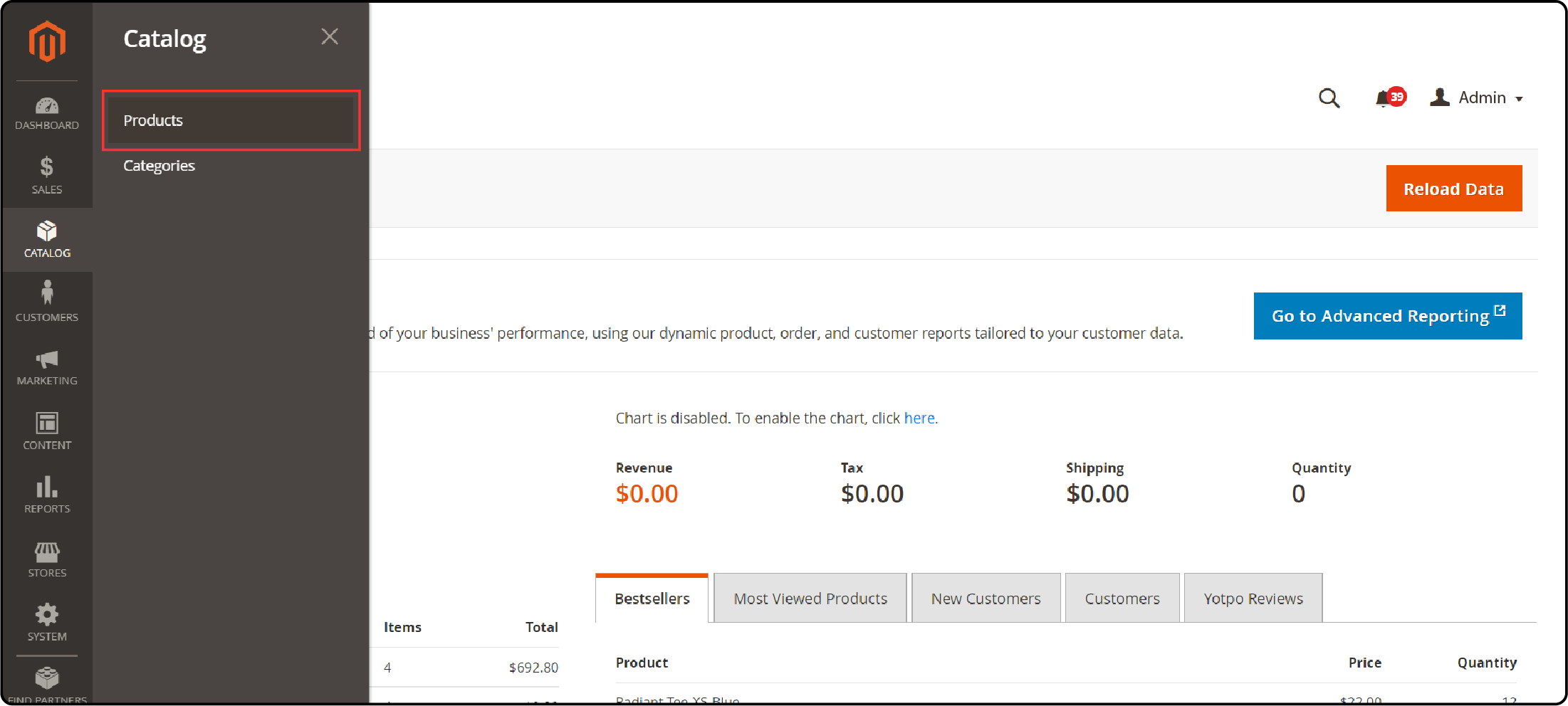
- Open the edit mode of a product.

- Add _TEST to the end of the product name under Name.

-
Save the changes.
-
Visit your store's home page in a new browser tab and:
a. Search for the edited product or category by navigating to it.
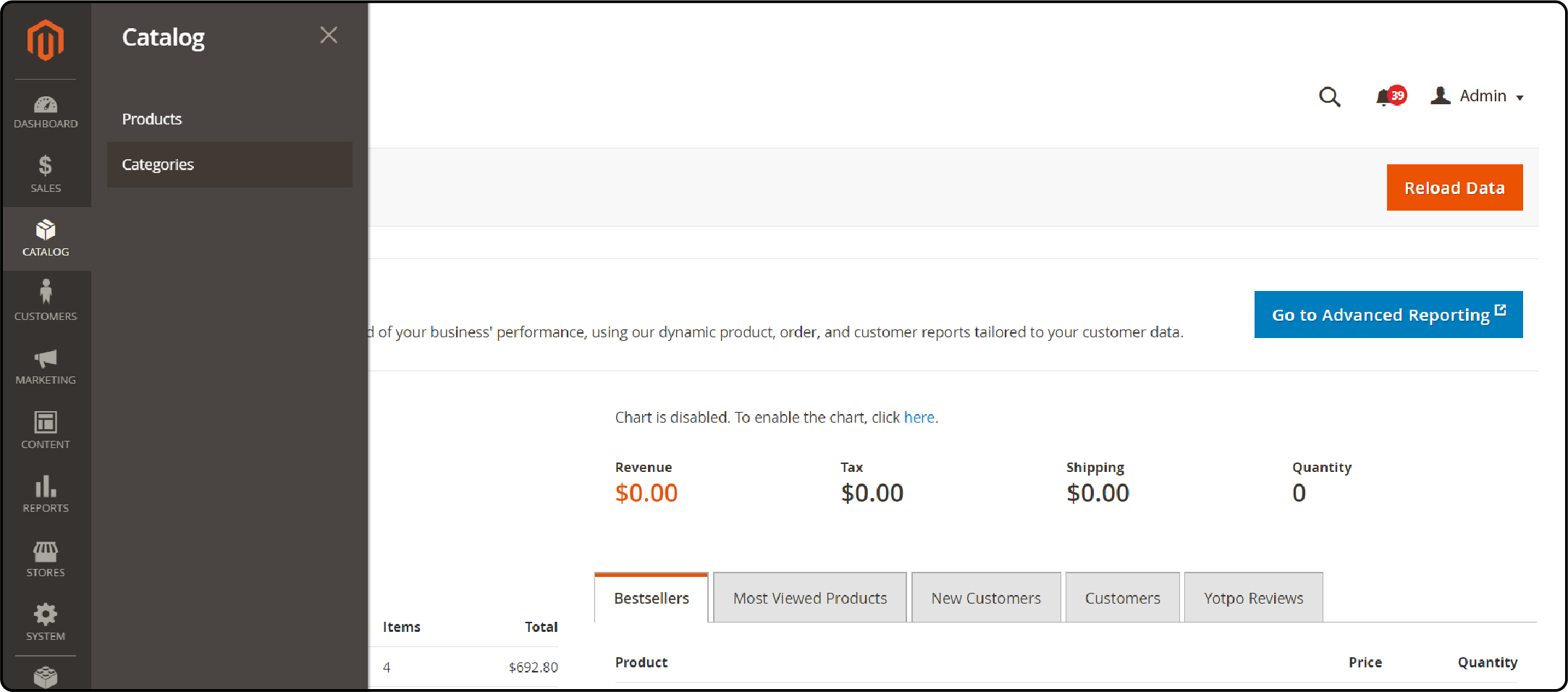
-
Refresh the page if needed to see the updated name.
Method 2: Verify for a Category
-
Navigate to Catalog > Categories in the Admin Panel.
-
In the upper-left corner, ensure that Store View is set to All Store Views.
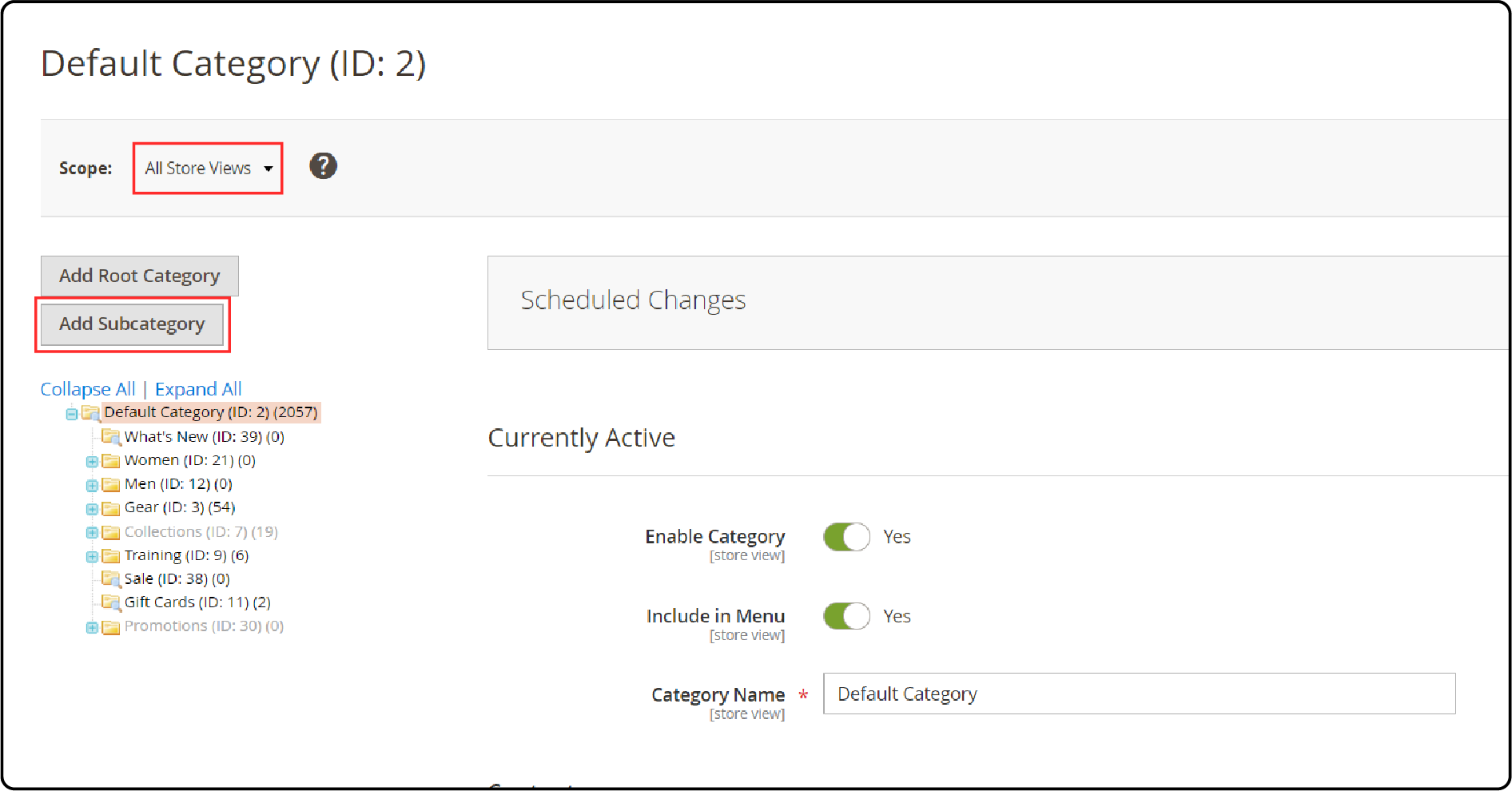
-
If prompted, click OK to confirm the action.
-
In the category tree, select an existing category, click Add Subcategory, and:
a. For Category Name, enter Test Category and Save.
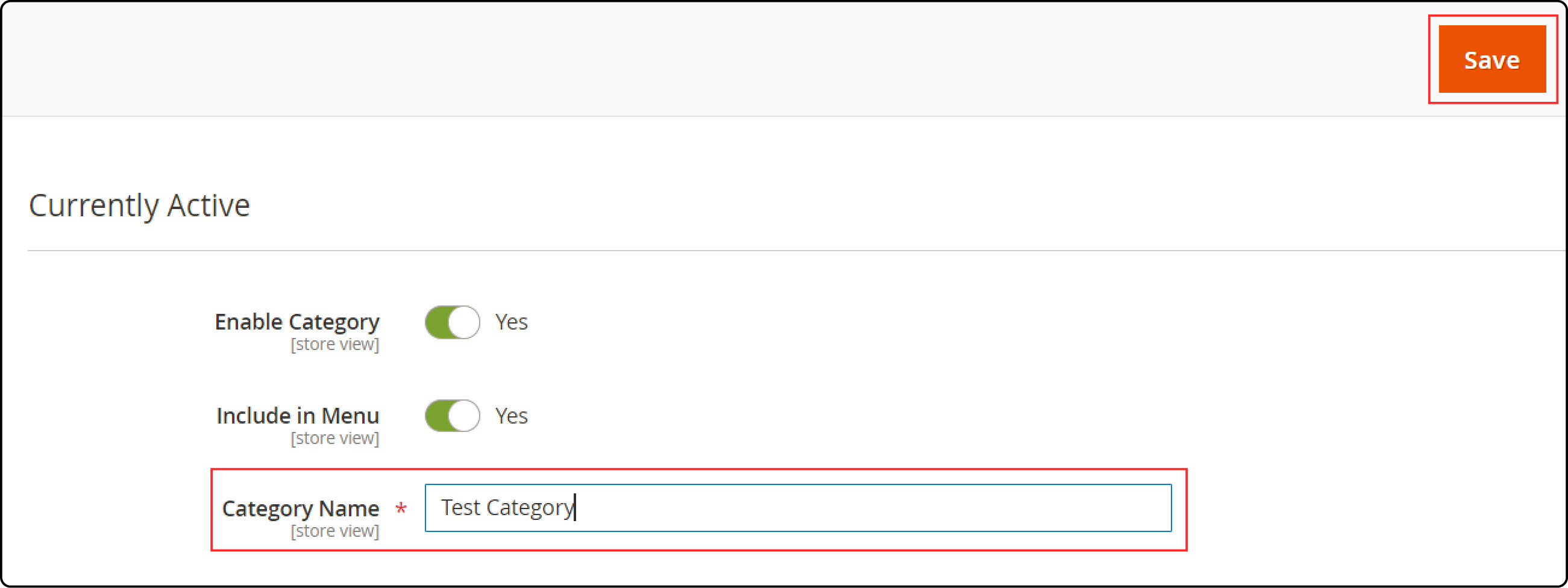
b. Expand the Products in Category section and click Reset Filter to display all products.
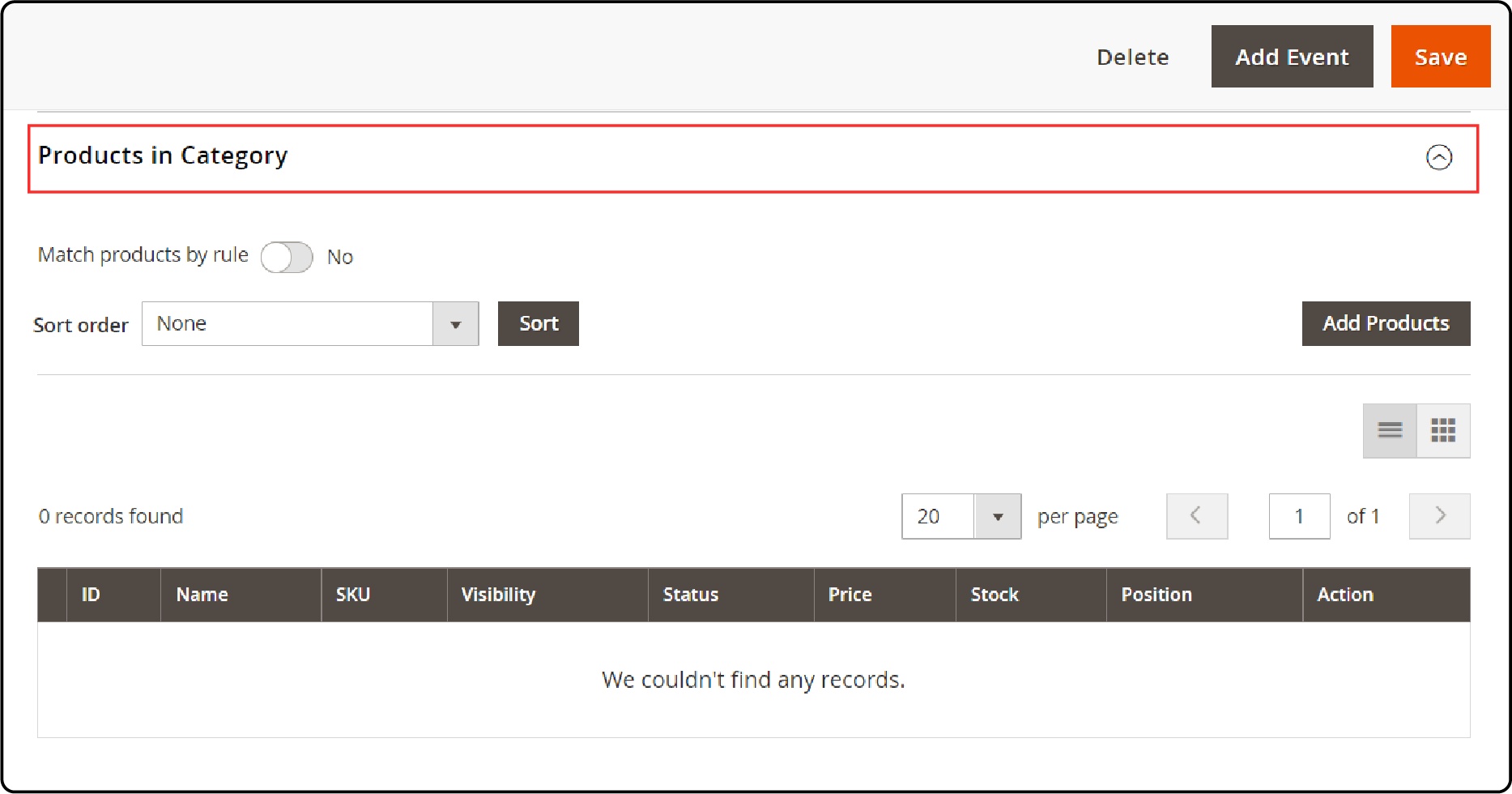
c. Add some products to this new category and Save.
-
Visit the home page of your store and browse the newly created category.
-
Refresh the page if necessary to see the changes.
3. Remove the test data
Remove the Test Category.
-
On the Admin sidebar, go to Catalog > Categories.
-
Select the test subcategory that you created and click Delete.
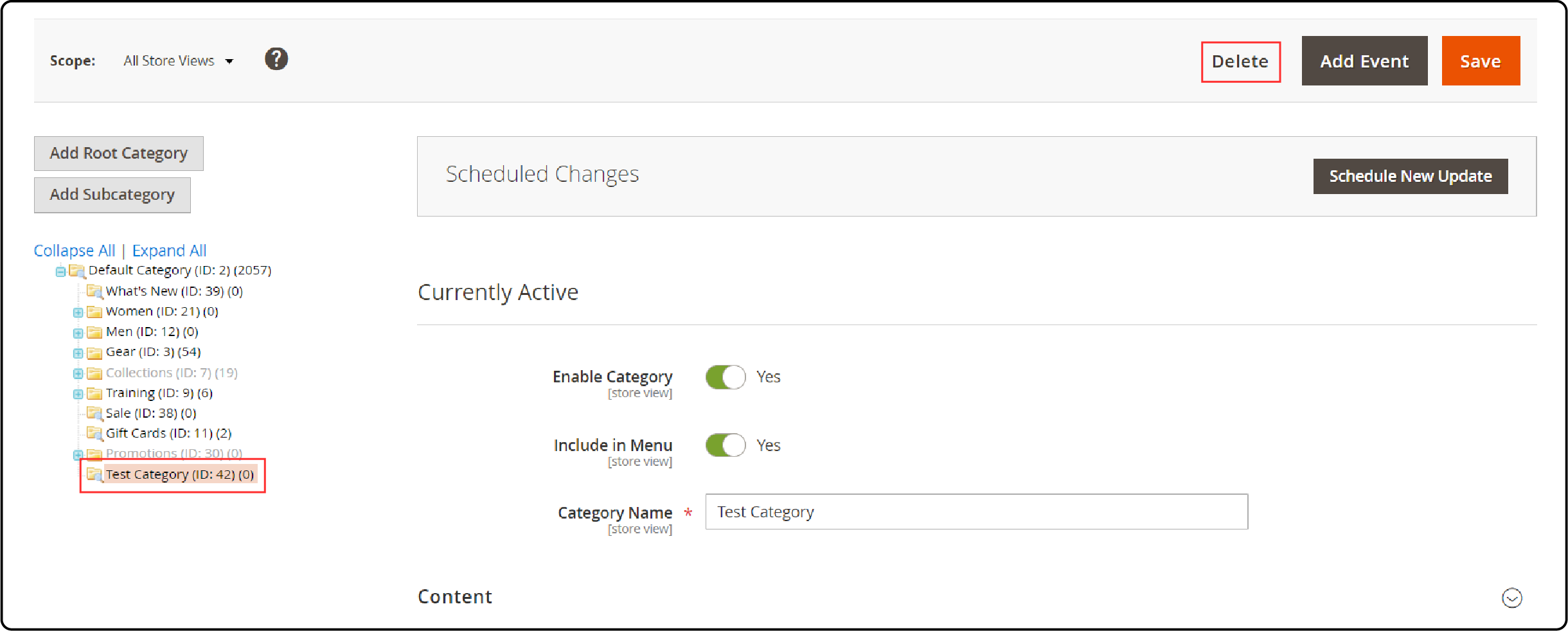
- Click OK to Confirm.

Restore the Original Product Name.
-
On the Admin sidebar, go to Catalog > Categories.
-
Open the test product in edit mode.
-
Remove the _TEST text that you added to the Product Name.
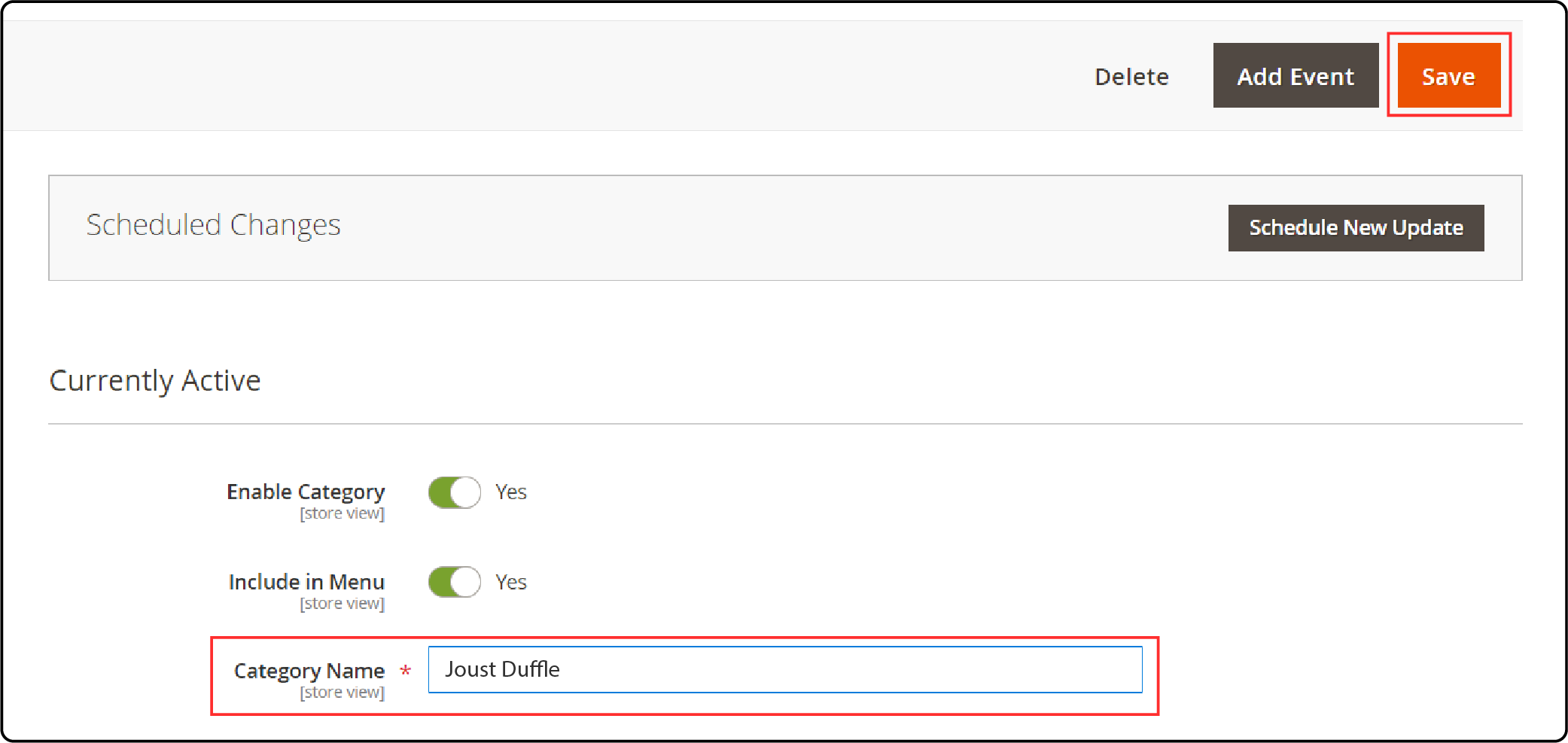
- Save the changes.
4. Restoring Original Configuration
-
Go to Stores > Settings > Configuration.
-
Expand Catalog, and select Catalog underneath.
-
In the Storefront section, set Use Flat Catalog Category and Use Flat Catalog Product to No.
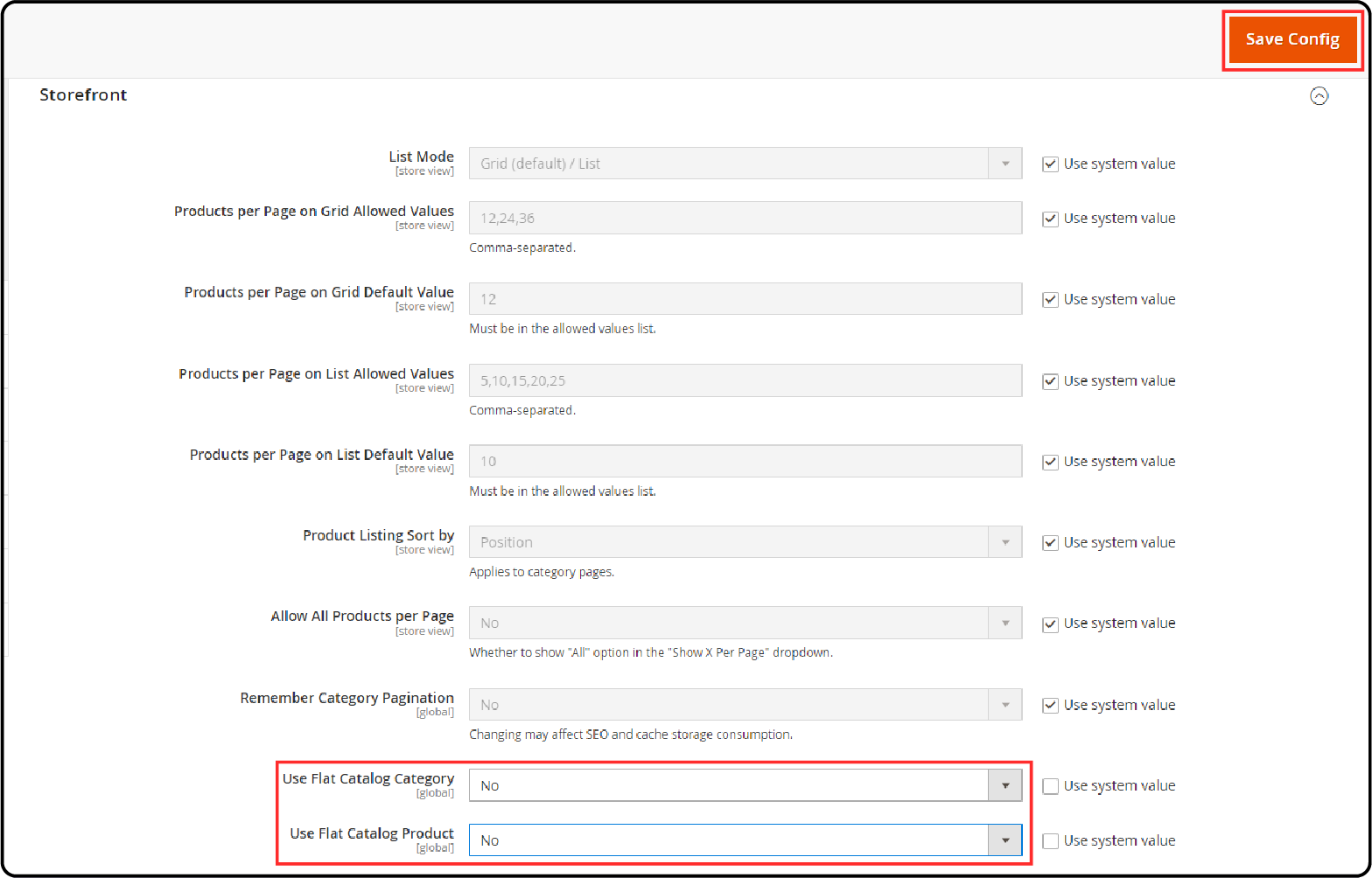
-
Save the configuration.
-
Refresh the cache if prompted.
FAQs
1. How is the flat catalog updated?
The flat catalog is updated via a cron job, which can be configured to run at specified intervals, such as every minute. This cron job triggers the process of updating the flat catalog tables by fetching and consolidating the latest product data.
2. Will enabling Flat Catalog affect my cart price rules or other promotions?
Flat catalogs generally don't directly affect cart price rules or other promotions. However, it's essential to ensure that any custom code or extensions you have installed are compatible with the flat catalog.
3. What are some best practices for managing the Magento 2 flat catalog?
Ensure your server resources are adequate for the frequent indexing required for flat catalog updates. Regularly monitor your store's performance and consider implementing caching mechanisms to enhance speed further.
4. Are there any potential performance degradation or indexing issues associated with a flat catalog?
Improper configuration or conflicts with any other extensions may lead to performance degradation and other indexing issues. Common issues include excessive resource consumption during indexing, conflicts with custom indexing processes, or tables not being updated properly.
Summary
Magento 2 flat catalog feature optimizes the performance of Magento stores with large product inventories. This tutorial also uncovers several other points, including:
-
It offers several benefits, from improved performance and faster indexing to better user experience.
-
The flat catalog can be enabled through Magento Admin Panel settings.
-
The results can be verified through product and category modifications, and original configurations can be restored.
-
The flat catalog is better than an EAV structure in many factors, from storage to development efforts.
Interested in enhancing the speed and efficiency of your Magento 2 store? Check out the managed Magento hosting plans to find a suitable service.




